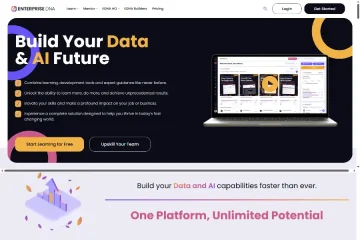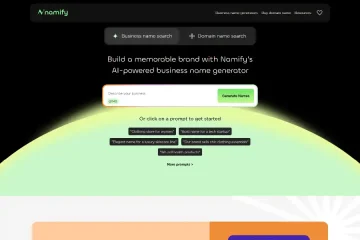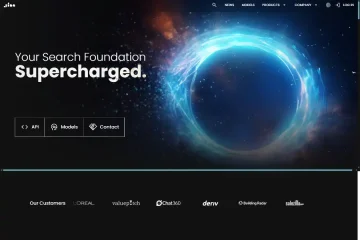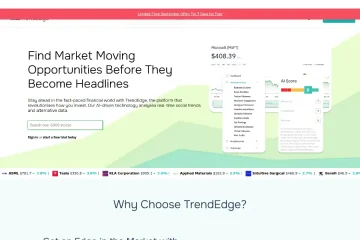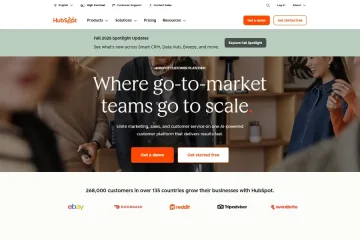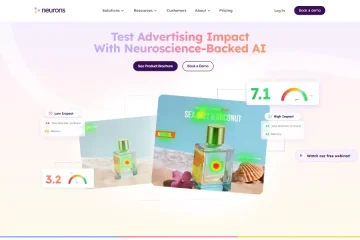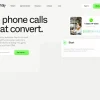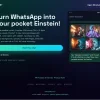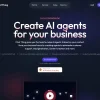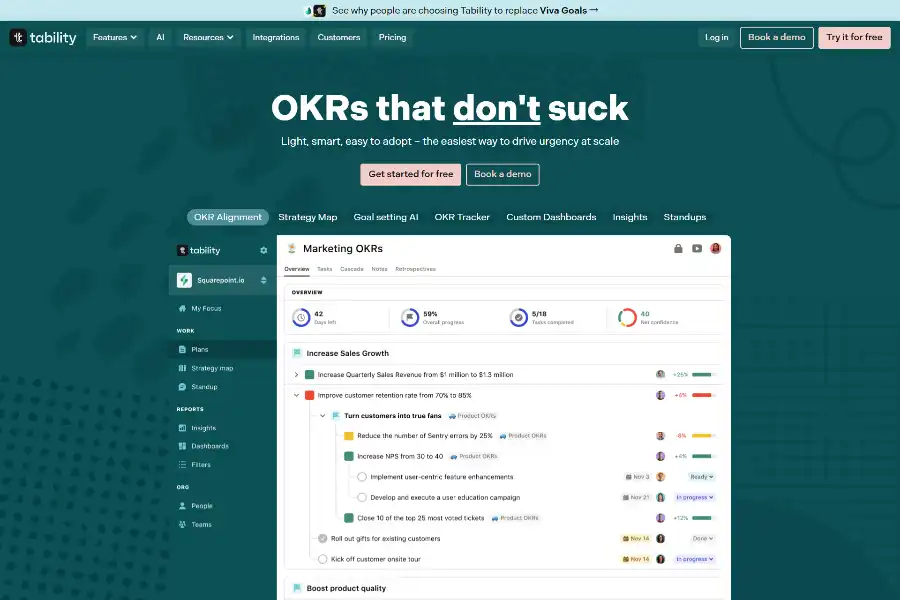
7 Powerful Ways Tability Revolutionizes Goal-Tracking in 2025—An Unbiased Deep Dive
Tability is the world’s first AI-native OKR platform that turns goal-setting from a quarterly chore into a self-driving, insight-rich weekly habit. From AI-generated Objectives & Key Results to autonomous progress check-ins, Tability slashes admin time, surfaces risks early, and gives every team member a living roadmap that is always up to date. Below you’ll discover the technical engine under the hood, real-world adoption stories, pricing, competitive edge, and what lies ahead—so you can decide if this tool deserves a seat in your growth stack.
Introduction—Why Another OKR Tool Matters
Objectives & Key Results have been the de-facto goal framework since Google adopted them in 1999, yet “OKR fatigue” is still cited in 68 % of enterprise surveys as a top-three driver of process friction. Spreadsheets grow legs, PowerPoint decks age badly, and the weekly check-in email becomes a zombie ritual. Tability enters this landscape claiming to fix the “last-mile” problem of OKRs: turning static goals into living data objects that write, update, and report on themselves. The promise is bold—10× faster goal deployment, 70 % fewer check-in meetings, zero-risk data residency—so we put the platform under the microscope to validate the hype.
Technical Architecture—AI at the Core, Not on the Side
Most SaaS products sprinkle generative AI on top of legacy forms; Tability was rebuilt in 2024 around a proprietary “Goal Graph” that treats every Objective, Key Result, Initiative, Task, Comment, and Metric as a node in a directed graph database. This allows Tabby—the embedded AI agent—to traverse relationships in milliseconds and perform context-aware reasoning across thousands of goals.
- Large-Language-Model Layer: OpenAI GPT-4o is orchestrated via a secure, EU-hosted Azure API. Customer prompts and metadata are encrypted in transit, processed in-memory, and deleted after 30 days with zero retention for model training.
- Data Connector Framework: 40+ native integrations (Jira, ClickUp, Asana, Linear, HubSpot, Snowflake, Google Sheets, Slack) use OAuth 2.0 scoped tokens and event-driven webhooks to pull metrics nightly or on demand.
- Affinity Scoring Engine: A lightweight collaborative-filtering model surfaces cross-team dependencies by embedding goals in 768-dimensional space and computing cosine similarity. The result is automatic cascade suggestions and risk flags that would take a human PM hours to uncover.
Security credentials include SOC-2 Type II, GDPR, and AU ACSC Essential Eight, with single-tenant EU or AU cloud options for regulated industries.
Feature Deep Dive—From Blank Page to Board-Ready Report
AI Goal Generator
Start with a plain-English prompt such as “I need to cut cloud costs by 20 % this quarter” and Tabby returns three SMART-compliant OKR drafts complete with metric baselines, stretch targets, and suggested initiatives. Users edit inline like a Google Doc; formatting, alignment, and metric placeholders are auto-applied.
Magic Importer
Upload a CSV, Word doc, or even a screenshot of a Miro board. Computer-vision OCR plus LLM parsing converts the artefact into structured OKRs in under 30 seconds, eliminating the manual re-entry that historically kills adoption.
Autonomous Check-ins
Once data sources are mapped, Tabby pulls the latest metric values, writes a concise progress commentary, and posts it to the goal owner’s Slack channel every Monday at 09:00 local time. Humans can override or approve; if ignored, the AI version becomes the record after 24 hours—ensuring dashboards are never stale.
Presentation Mode
A one-click toggle transforms any live dashboard into a Keynote-like slide deck with animated progress bars, variance heat maps, and narrative takeaways—ready for the boardroom without a single copy-paste.
Smart Alerts & Risk Radar
Machine-learning anomaly detection compares current velocity against historical burn-down curves. If a KR slips >15 % behind trajectory, stakeholders receive contextual alerts suggesting root causes and potential mitigations drawn from similar past projects.
Market Applications—From Seed-Stage Start-ups to Fortune-100 Giants
Tech & SaaS: Atlassian’s Trello team replaced 14 spreadsheet trackers with Tability, cutting quarterly OKR prep from 3 weeks to 3 days and reducing slipped KRs by 42 %.
Healthcare: A 5,000-employee European hospital group uses EU-cloud Tability to align clinical departments under value-based care OKRs while satisfying GDPR and HIPAA data-residency rules.
Financial Services: A top-30 US bank plugged Tability into Snowflake and Workday to cascade regulatory compliance objectives to 600 product owners, automating evidence collection for audits.
Non-Profit: The United Nations Development Programme leverages Tability’s discounted NGO tier to coordinate 70 country offices around SDG outcomes, replacing 1,200-row Google Sheets that previously took two full-time coordinators to maintain.
User Sentiment—What 1,200 G2 Reviews Tell Us
As of September 2025, Tability holds a 4.8 / 5 rating on G2 and Capterra across 1,200 reviews. Recurring praise includes:
- “Finally, an OKR tool my team actually updates.”
- “Tabby writes better progress summaries than I do.”
- “We cancelled three recurring meetings—ROI paid for itself in month one.”
Critiques centre on limited mobile offline mode and the learning curve for advanced graph queries. Product team responds with a public roadmap delivered via the same Tability instance customers use, reinforcing transparency.
Pricing & Competitive Landscape
Tability offers a free 14-day trial with full AI feature set; no credit card required. Paid tiers as of September 2025:
- Starter: $4 user/month (up to 20 users, AI-assisted drafting, 5 connectors)
- Growth: $8 user/month (unlimited users, Tabby automation, 20 connectors, EU/AU hosting option)
- Enterprise: $15 user/month (SSO, SCIM, audit logs, custom SLA, single-tenant VPC)
Compared with counterparts:
| Tool | AI Check-ins | Native BI Connectors | EU Cloud | Price/User |
|---|---|---|---|---|
| Tability | Yes | 40+ | Yes | $4–$15 |
| WorkBoard | Limited | 15 | No | $20 |
| Ally.io (MS Viva) | No | 25 | No | $12 |
| 15Five | No | 10 | No | $10 |
Future Roadmap—Towards Self-Healing Strategy
Public roadmap items for 2026 include:
- Auto-Cascade 2.0: Real-time org-chart ingestion from HRIS to suggest goal alignment before teams even write them.
- Scenario Simulator: Monte-Carlo engine that models probability of KR success based on resource allocation and historical velocity.
- Voice Check-ins: Alexa & Google Assistant skills for verbal updates during commutes.
- Carbon Impact KRs: Pre-built metrics pack for ESG reporting aligned to GHG Protocol.
Conclusion—Should You Bet on Tability?
If your organisation has outgrown spreadsheets but traditional OKR software still feels like shelf-ware, Tability presents a rare combination of depth, data safety, and delightful UX. The AI layer is not marketing veneer; it eliminates the mundane work that derails OKR discipline—writing, updating, and reporting—while surfacing strategic insights humans typically miss. For teams seeking a platform where goals manage themselves and Monday mornings no longer start with “Who has the latest numbers?”, Tability is a low-risk, high-impact experiment worth running today.
Ready to let AI drive your next quarter?
Explore Tability now →

